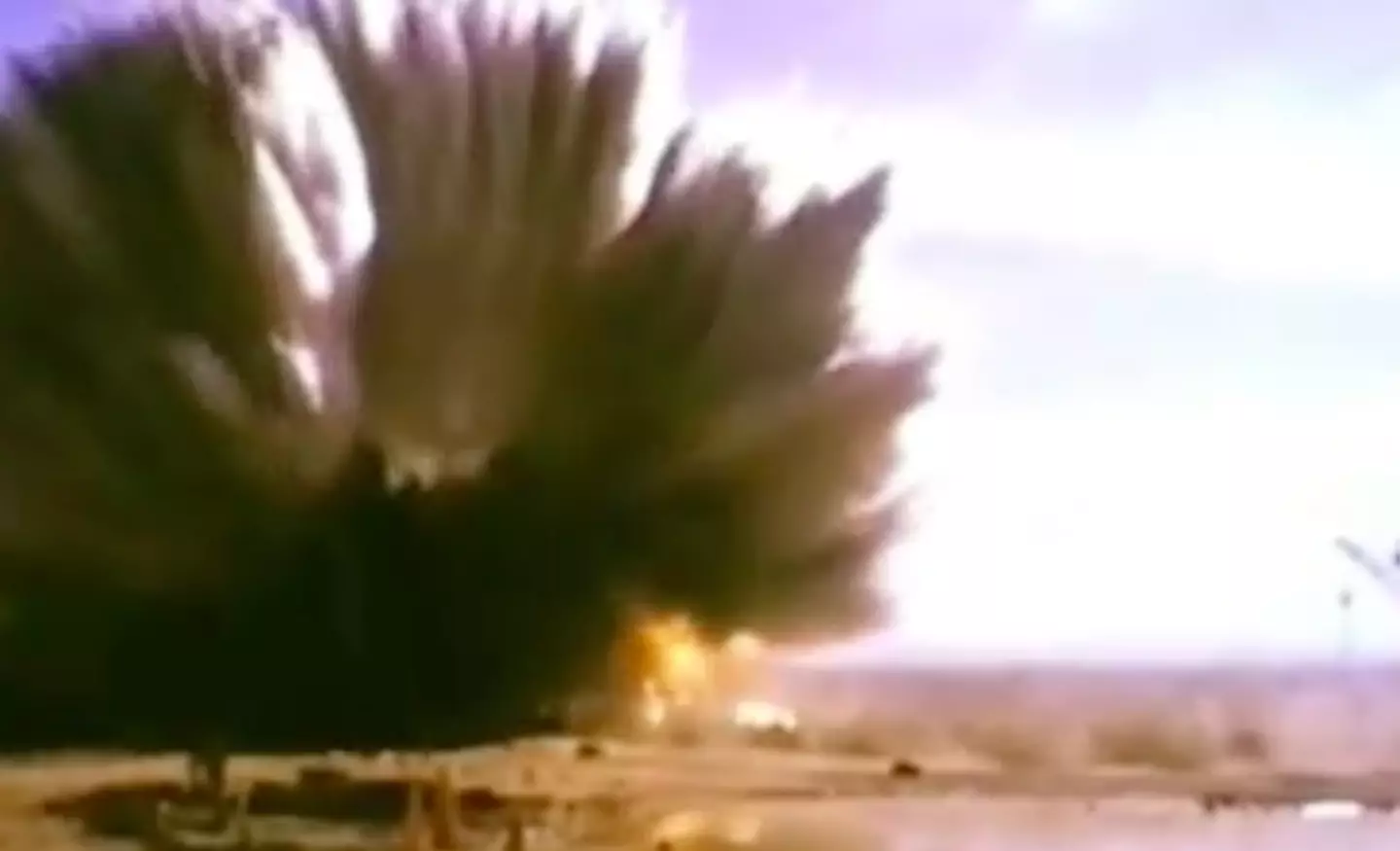
People are flocking to social media in horror after seeing a test involving a plane being flung into a concrete wall at 500mph.
Ever wondered what would happen if a plane crashed into a concrete wall at around 500mph? No, me neither, but you're about to find out.
A team from rocket sled facility Sandia National Laboratories in Albuquerque, New Mexico, carried out a test to see what would happen if they sent a plane down a runway at 500mph to crash into a wall. Prepare to wince and then your jaw drop swiftly after:
Thankfully, the clip doesn't show a commercial flight being hurled into a concrete wall, so you can't panic and start overthinking a concrete wall appearing out of nowhere in the sky - or the plane nosediving into one - when you're next flying through the air on your next vacation.
Instead, the footage shows a F-4 Phantom aircraft being fired up into 'a massive, essentially rigid reinforced concrete target (3.66 meters thick)' in 1988.
Advert
In order to get the plane going at a whopping 480mph to crash into the concrete wall, the aircraft was placed on 'four struts that were attached to the sled tack by carriage shoes to direct the path of the aircraft,' according to news outlet What You Haven't Seen.
The experiment also used not just one, but two 'stages of rockets' to make sure the plane reached the 'floated' concrete target at the required speed.
But what happened when the plane and concrete wall collided?

Advert
Well, to put it mildly, the footage reveals a mahoosive explosion and it's even more agonising, but also impressive, when you see it in the slow motion part of the clip.
And if you imagine the mark your face makes when you accidentally walk into a glass door thinking it was open, that's basically the mark the plane leaves on the wall, but a much larger and more impressive scale, of course.
Sandia National Laboratories' website states: "The test was not intended to demonstrate the performance (survivability) of any particular type of concrete structure to aircraft impact.
"The impact occurred at the nominal velocity of 215 meters per second (about 480 mph).
Advert
"The mass of the jet fuel was simulated by water; the effects of fire following such a collision was not a part of the test.
"The test established that the major impact force was from the engines."

People are flooding to footage of the test shared on social media in shock over the brutal destruction of the plane.
Advert
One YouTube user said: "So the plane never actually went through the concrete. The wings breaking off and taking the sides of the block created that illusion. Cool!!"
Another added: "No concrete slabs were harmed during the making of this video."
A third commented: "Obliterated!! Left the imprint of the Phantom on the wall!! Awesome."
And a final resolved: "I never get tired of watching this! It is simply mind boggling the dematerialization that the plane undergoes!"
Topics: Science, Travel, World News, Social Media, YouTube